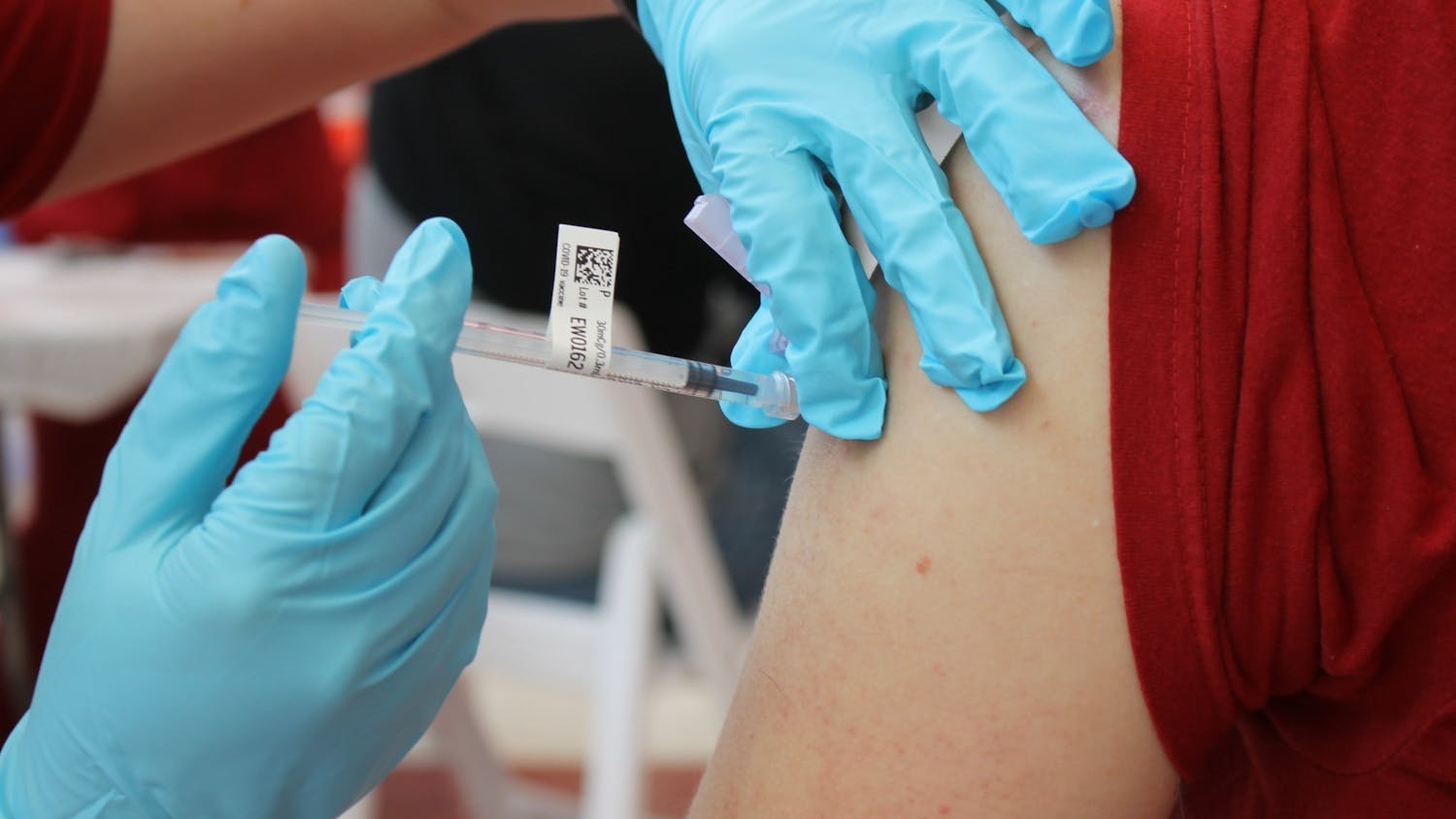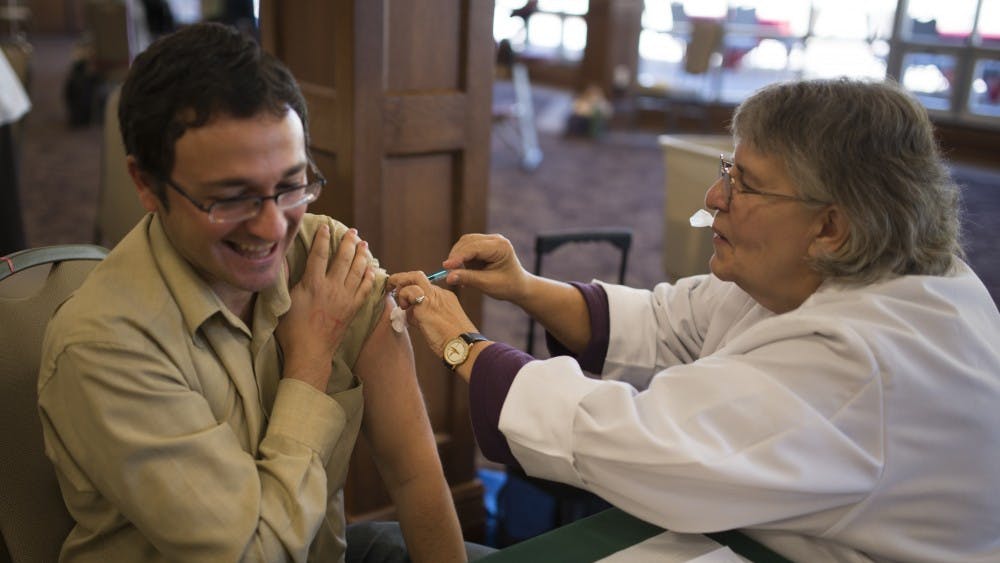Caucasian men face daunting odds of keeping a full head of hair throughout their lifetimes. \nAll Caucasian men possess the inherited tendency for male pattern balding, also known as androgenetic alopecia. Eventually, 96 percent of those men will lose hair to some degree, but because of variability in the expression of the genes, many will not have noticeable early hair loss.While it is possible for women to develop androgenetic alopecia, it is much less common. Scientists have found that black men are four times less likely than Caucasians to prematurely bald. \nLosing hair might be a horrifying concept for some, but others see a silver lining.\n"Really, the advantages to balding are endless if you think about it," said senior Danny DeSloover, an Indiana Daily Student employee. \nHe lists lack of "hat hair," reduced grooming time and no money spent on hair care products as benefits. \n"But I'll be honest -- balding doesn't look that good or even healthy. Maybe that's the big stigma about it," he said.\nIt's normal for everyone to lose some amount of hair each day, but the cycle of growth that hair follicles normally go through can keep up with the rate of loss. Even before the hair falls out, the follicle is ready with a developing new hair. When the old hair is lost, the new hair grows to replace it. \nScientists have determined that during male pattern balding, the hair follicle shrinks, making the hairs that grow in finer and lighter than the previous hairs. The growth cycle takes longer, which means the hairs aren't being replaced as fast as they are falling out. Eventually, the follicle just stops producing hair. \nOn average, 30 percent of Caucasian men will begin balding by the age of 30, and 50 percent will show signs of balding by the age of 50, according to a 1998 article in British Medical Journal. \nTim Greives, a biology graduate student who is nearing 30, said he doesn't mind being in the 30 percent of balding males his age. \n"Thankfully, I'm not self-conscious about it, so it can lead to a good form of amusement for a while," Greives said. \nGreives' wife likes to sneak around and take funny pictures of the balding spot on the top of his head.\nStress, poor nutrition, pregnancy and chemotherapy can all cause hair loss, but the pattern seen in androgenetic alopecia is caused by hormones. More specifically, male pattern balding is caused by a genetic predisposition for balding and excess levels of circulating androgens such as testosterone. \nThe rate of hair loss is extremely variable. Some men might go completely bald in five years, while others could take 15 to 25 years to go completely bald, and some men might only develop thinning hair. \nThe process of balding starts with testosterone, which is converted into dihydrotestosterone. DHT then goes on to damage the hair follicle. Eventually, the follicle just stops working. \n"This explains why people who abuse anabolic steroids -- like athletes and bodybuilders -- typically display substantial hair loss," Gregory Demas, an IU biology professor, said. \nAll the extra androgens from the anabolic steroids people abuse are eventually converted to DHT in the body, which makes them start balding. \nDHT could be considered the preferred androgen of the body, Demas said. Both testosterone and DHT can bind to androgen receptors, enter cells and activate certain genes. DHT binds much better to the androgen receptor than testosterone, so DHT can produce a greater effect than a comparable amount of testosterone. \n"It's DHT, not (testosterone), that masculinizes male genitalia and causes male secondary sex characters such as growth of chest hair," Demas said. \nThat's why there aren't many hairy-chested, bald females or eunuchs (castrated males): They just don't have enough testosterone in their bodies to make into DHT. \nThe medical treatments for balding such as minoxidil (Rogaine) and finasteride (Propecia) block the conversion of testosterone into DHT, stop the damage to the follicle and allow the follicle to return to a more normal cycle of growth. \nMinoxidil works on the surface of the skin, while finasteride affects the whole body.\nThe treatments all have side effects and must be taken for the rest of the user's life to have the desired effects.\nThat might be one reason so many men today are choosing to embrace their baldness by either shaving their head completely or just letting nature run its course. After all, Bruce Willis, Andre Agassi and Michael Jordan are just a few of the growing number of famous men who have adopted the bald look.
Bald is Beautiful
Most Caucasian males won't escape hair loss
Get stories like this in your inbox
Subscribe





